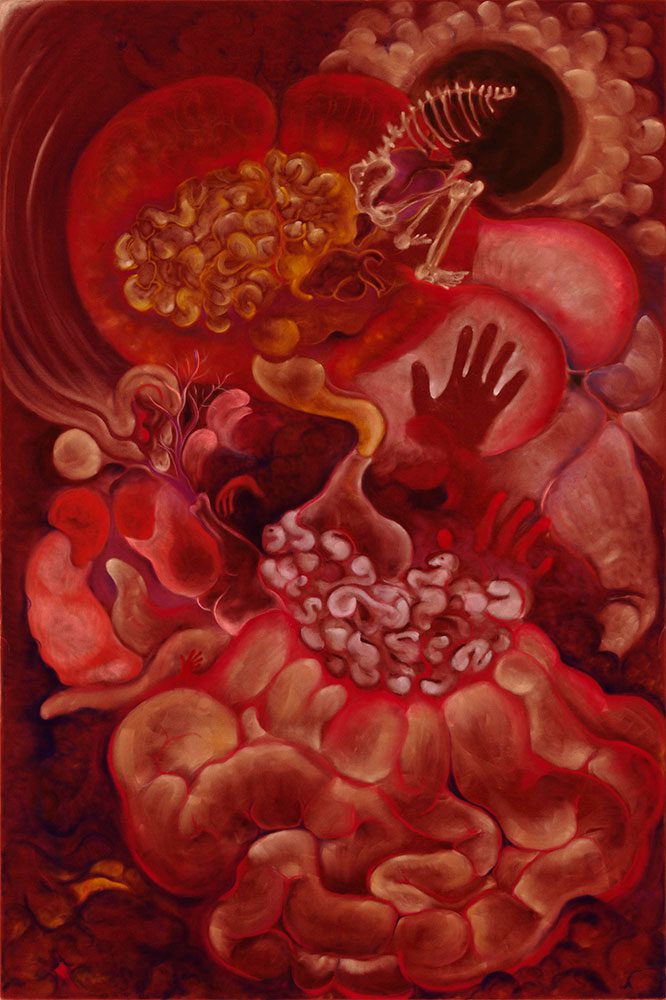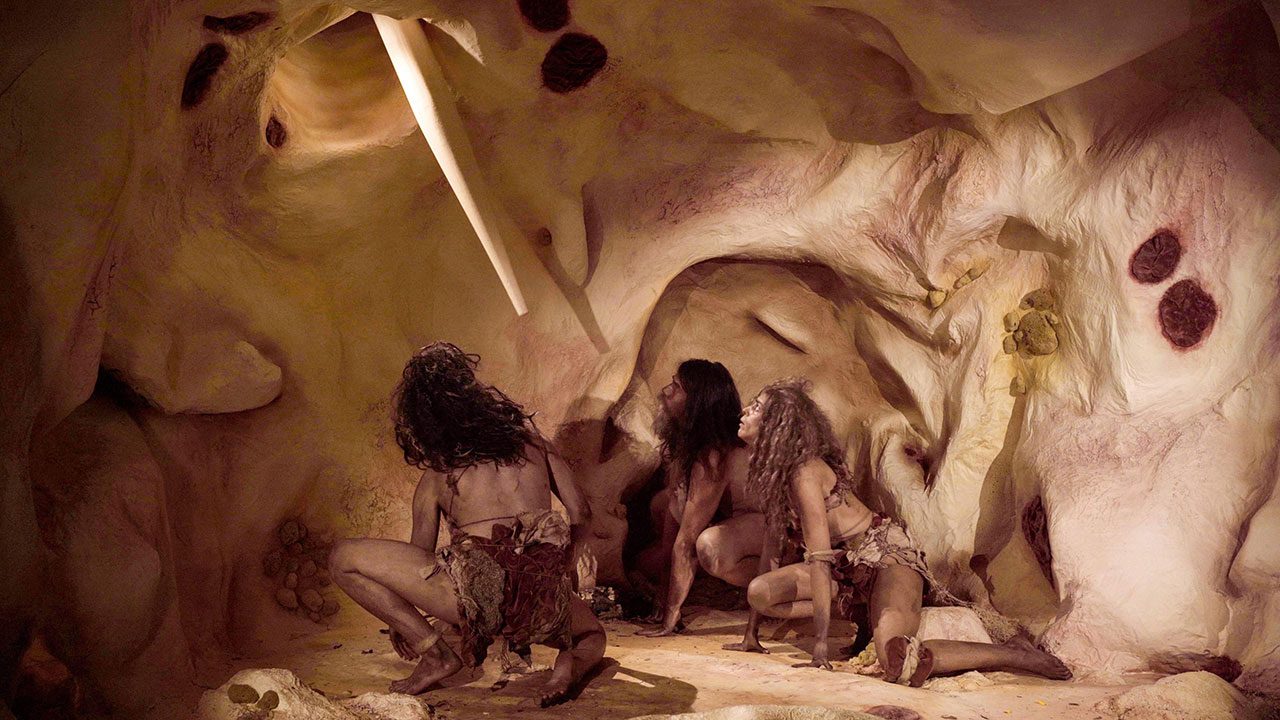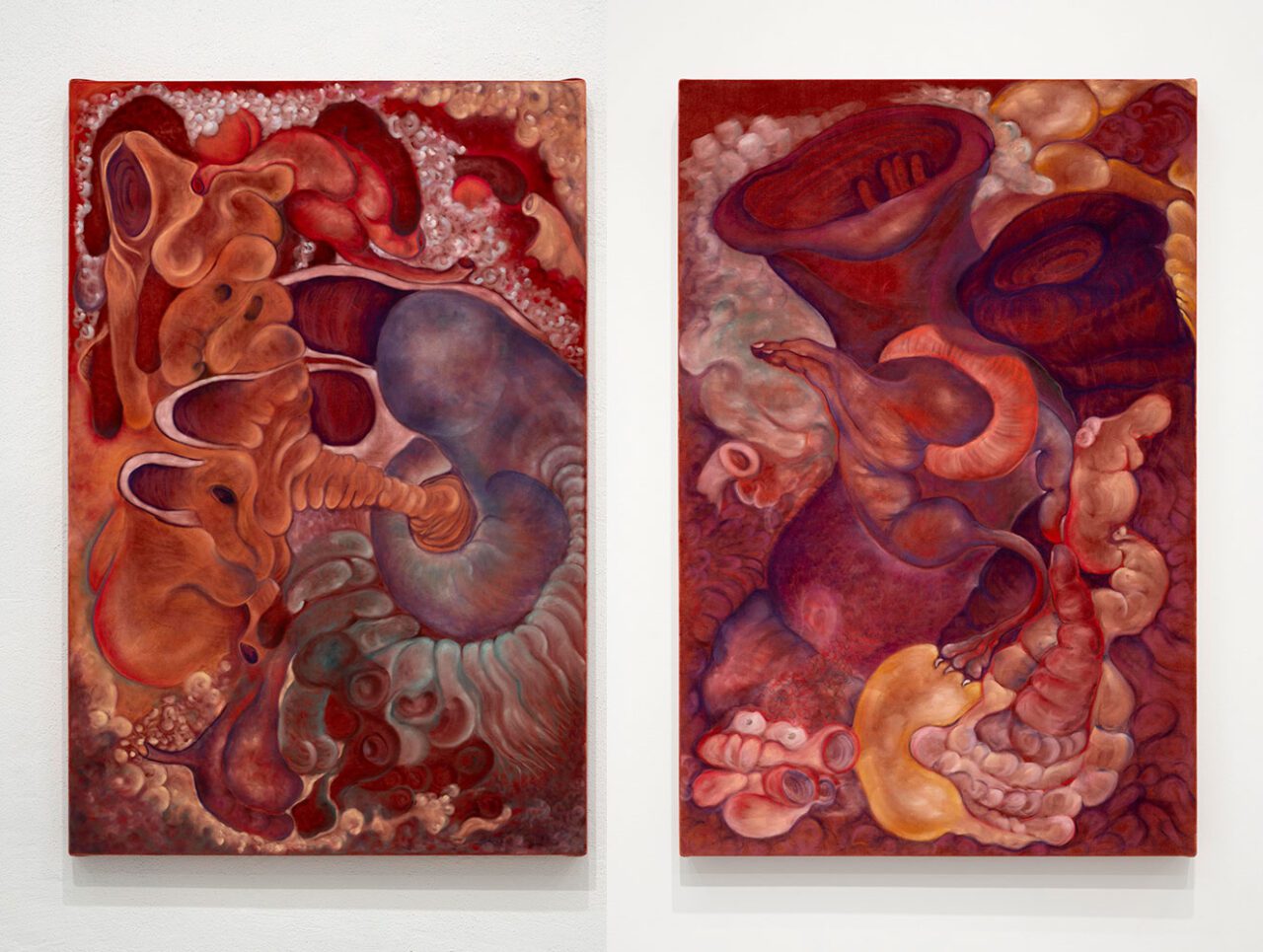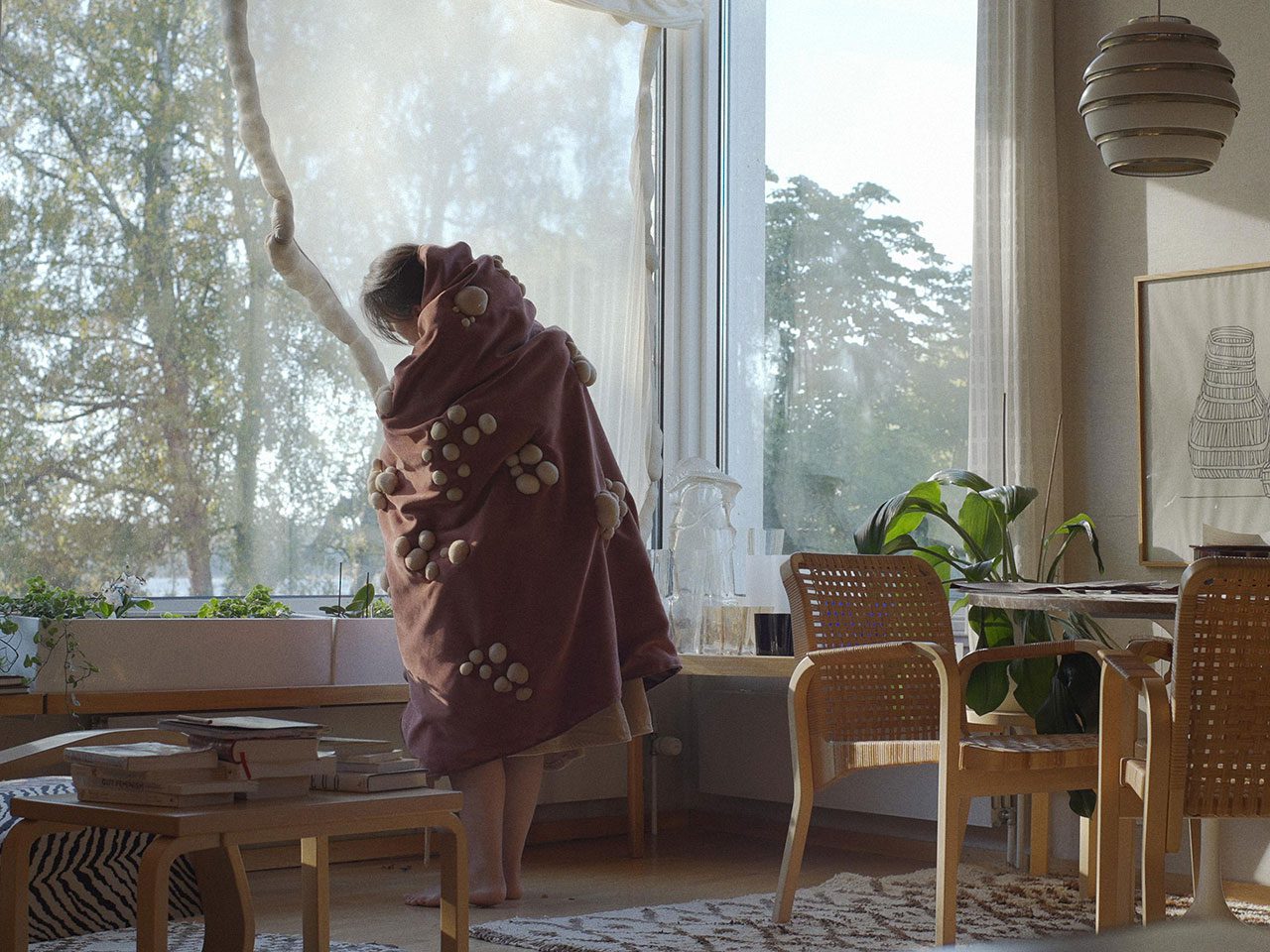PRESENTATION:Dafna Maimon-Symptoms
Dafna Maimon’s work can be described as a series of rebellious emotional landscapes; something they depict, but also something that they are. she creates quietly humorous depictions of human beings who are not always aware of their own bodies’ needs amid the demands of contemporary existence – a state viewers may recognise from their own lives.
By Dimitris Lempesis
Photo: Kiasma Archive

Dafna Maimon’s solo exhibition “Symptoms” opens up the human body, inviting its varied components and symptoms to sprout up and sprawl out around us. Visitors pass through a velvety intestinal tunnel and a cave-sized wisdom tooth to see artworks such as a series of pastel paintings showing mysterious internal worlds. We also encounter an enlarged tardigrade, one of the world’s toughest microscopic creatures, as well as noted proponent of the mind-body split René Descartes*, who appears in Maimon’s musical installation Homebody – and whose dualistic worldview is challenged throughout the exhibition. The exhibition includes video installations, paintings on velvet, sculptures and drawings. Three video works follow fictional characters immersed in modern-day lifestyles whose bodies communicate different signs and symptoms. In her work, these symptoms are considered signs of bodily wisdom that, if listened to, can provide us with tools for living more meaningful lives. “Leaky Teeth” is a multidisciplinary project consisting of a short film, a series of drawings, and sculptural elements. The project explores the retrieval of bodily intelligence as a key to understanding our broken relationship to nature. The film centers around a fictional character named June and a cavity in her wisdom tooth that is home to a group of prehistoric humans. From researching paleolithic cave art, and the likely fluid relationship between these early artists and their environments, an experimental storyline rethinking physical pain was developed and set inside the main character’s wisdom tooth; a decaying papier mache cave set. In a stark contrast to the cave, June’s life is set in a luxurious, yet leaking modernist villa, the Maison Louis Carre, designed by the architect Alvar Aalto. June’s simultaneously leaking tooth and home suggest a worldview where everything, including our bodies, is porous; we are made and remade in, and through, our relationship to the material world. There are holes everywhere; time, space and bodies leak into and sponge of one another. We are thoroughly entangled – whether we like it or not. “Indigestibles”, comprising video, immersive installation, sound and performative workshops, is an artistic research on the lost condition of modern humanity. Laced with warm humor, the interdisciplinary project sheds light on the complicated relationship between people and their bodies. The project is shaped as a two-part portrait of Shelly; a fictional middle-aged woman whose life lacks meaning and content. The work deconstructs Shelly and scrutinizes the imbalance that exists between her consciousness and her uncooperative digestive system. Shelly’s mind-body connection opens up her inner world, which can be experienced viscerally through the life inside her guts; an immersive 22-meter-long intestinal space constructed within a tunnel that the audience can enter. The flourishing network of bacteria, internal organs, and undigested food are depicted as a dazzling, lush, velvety and sonic landscape where Shelly is lost and unable to navigate. The inhabitable sculpture functions as an homage to the intestine as a beautiful and profoundly philosophical place linking us to our environments and reflecting them within us—a place where the body cyclically bears witness to and documents its surroundings. In an adjacent room, a looping video hypnotically traps the viewers in a cinematic loop, depicting Shelly’s repetitive existence of eating processed meats and watching never-ending news reports detailing the world’s reaction to the death of the last orangutan. The relationship between the main character Shelly, what she is seeing, feeling, and ingesting are experienced as one multilayered connected narrative where each element is deeply intertwined with one another and affecting each other. Maimon’s most recent video installation, “Homebody”, premieres at Kiasma. In addition, a live musical expanding on “Homebody” themes and characters will be staged at Kiasma Theatre in August 2025. Dafna Maimon’s work can be described as a series of rebellious emotional landscapes; something they depict, but also something that they are. Her artistic practice is concerned with the reordering of social codes under capitalist consumption in order to re-channel the agency of the individual toward autonomy and to demand a space for closure. Maimon’s work, in particular, deconstructs patriarchal structures and plays with them through exaggeration, substitution, re-contextualization and détournement, allowing individuals to find new ways to make the most of their lives and sense of self. This process can manifest in the creation of anything from performative mini-institutions of their own, in which audiences can participate for several days, or “directed-experiences” lasting a few hours, to immersive performances, films or installations that generate space for reflection, stillness and catharsis. Maimon’s work further highlights the absurdity of the contemporary demand for individuals to be happy, while they are simultaneous sold a never ending need for self-improvement. Humor is herein used as a strategy to rupture and re-route the ways one is made to desire in consumer societies. In trying to define this conflict, Maimon’s work simultaneously offers open-source alternatives to deal with this distorting condition. As such, these alternatives require making works that engage with small-scale communities, entailing an immersive, anthropological and psychological research into expressions of both individual and communal sensibilities of belonging. Ultimately, these primarily performative and cinematic works tell illogical and at times absurd human stories touching upon themes such as trauma, memory, play, empathy, family, self-maximalization, and self-awareness in the digital age.
*René Descartes (31/3/1596-11/2/1650) was a French philosopher, scientist, and mathematician, widely considered a seminal figure in the emergence of modern philosophy and science. Mathematics was paramount to his method of inquiry, and he connected the previously separate fields of geometry and algebra into analytic geometry. He laid the foundation for 17th-century continental rationalism, later advocated by Spinoza and Leibniz, and was later opposed by the empiricist school of thought consisting of Hobbes, Locke, Berkeley, and Hume.
Photo: Dafna Maimon, Homebody (Video still), 2025, © Dafna Maimon
Info: Curator: Piia Oksanen, Museum of Contemporary Art Kiasma, Mannerheiminaukio 2, Helsinki, Finland, Duration: 25/4-21/9/2025, Days & Hours: Tue & Fri 10:00-20:00, Wed-Thu 10:00-18:00, Sat-Sun 10:00-17:00, https://kiasma.fi/




